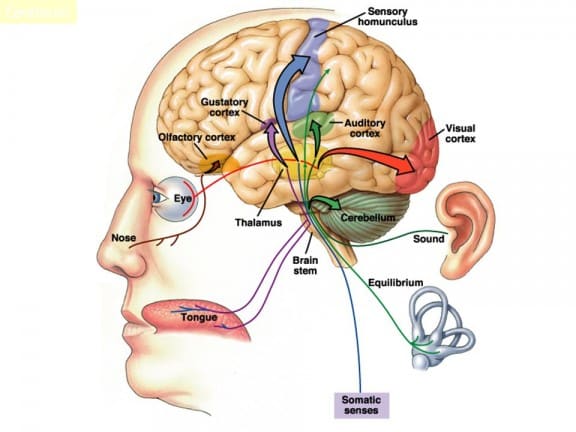
Understanding Motor Sensory Apparatus
Our motor sensory apparatus requires three sets of inputs to respond to our movement environment: ocular, vestibular, and proprioceptive. These three sets determine the quality of output or motor response. This is a bottom-up approach. The bottom-up strategy relies on the inputs to derive output. The top-down approach includes motor planning.
Our somatic experience is based on perception. How we perceive and respond to the world around us is directly affected by the three lenses of perception: sensory, limbic, and thought. There is seemingly a lot going on with the input and response relationship of our motor sensory apparatus. We can dissect these inputs and outputs into these three general categories. Those three categories can then be expanded into subsets. The sensory set is based on how our structure is relaying somatic inputs from our five primary senses: smell, taste, touch, hearing, and vision. There are non-primary senses as well. Proprioception is considered one of them. Proprioception is the set of inputs that allows us to close our eyes and touch our nose. There is an inner map of where our body is in space and the relationship to movement. Without proprioception, we would not be able to develop fine motor skills.
Proprioception relies on the other two motor sensory apparatus inputs to respond appropriately. Impede any of these inputs, and the output will be impeded as well. The three inputs of sensory apparatus and the three of lenses of perception are intrinsically interdependent. Understanding this helps us become better therapists as we fundamentally cannot separate or compartmentalize any of these attributes when working with people.
Read the entire paper by clicking below.